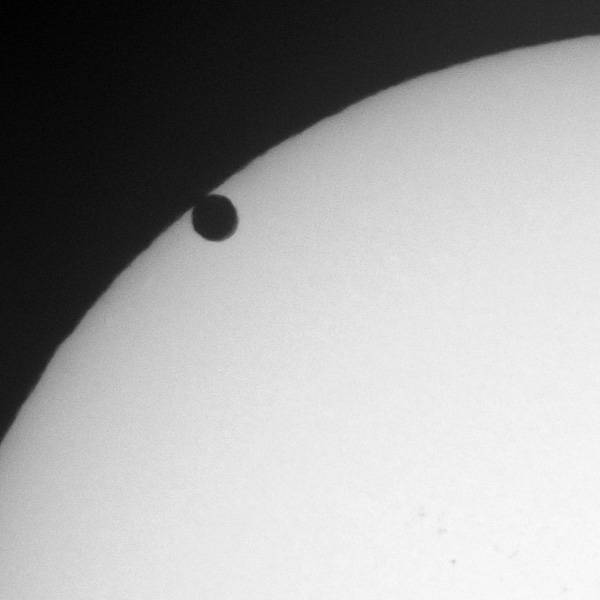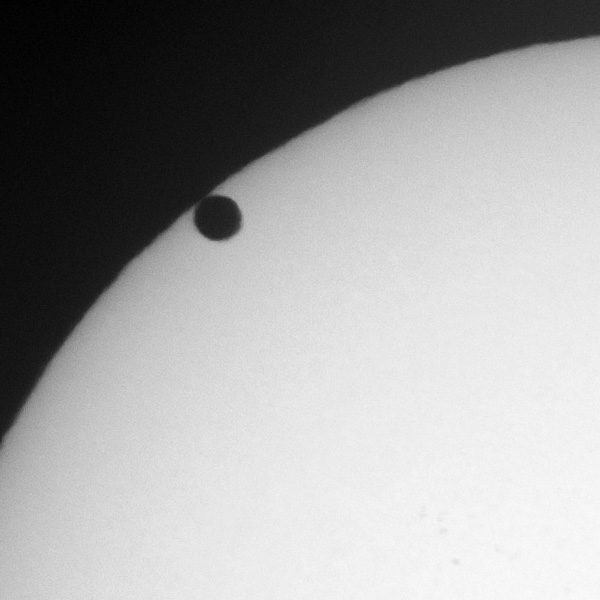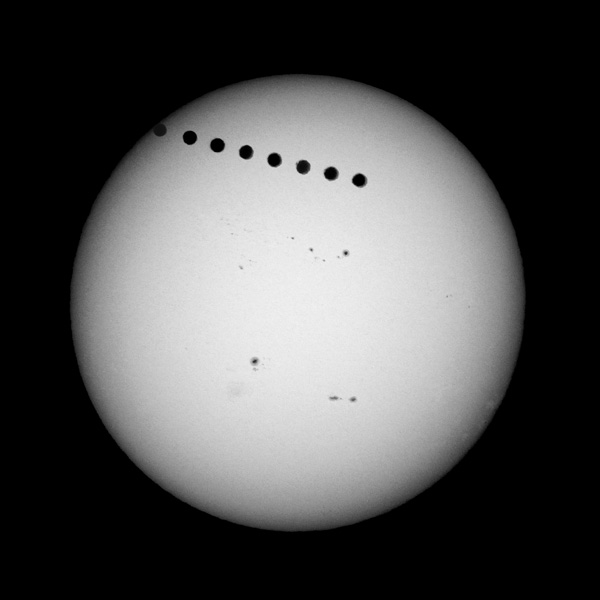

The "black
drop effect" at second contact

Composite of eight
exposures showing Venus' progress across the disk of the Sun
Full-resolution
version: 2000 x 2000
Equipment:
Celestron 102-ED/Thousand Oaks solar filter Type 2+/Nikon D300/Great Polaris mount
F-ratio: f/9
Exposures: 1/125 second for the two images on top. The exposures for the
composite were 1/125 second for the first and 1/250 second for the rest.
ISO: 200
Date: June 5, 2012, 3:23 PM, 3:24 PM PDT. Composite: 3:24 PM, 3:56 PM,
4:26 PM, 4:56 PM, 5:26 PM, 5:56 PM, 6:26 PM, 6:56 PM PDT.
Location: Landers, CA, USA
Technical Information: The images were converted to grayscale in
Photoshop CS5. Eight exposures were combined using Darken to create the composite image.




